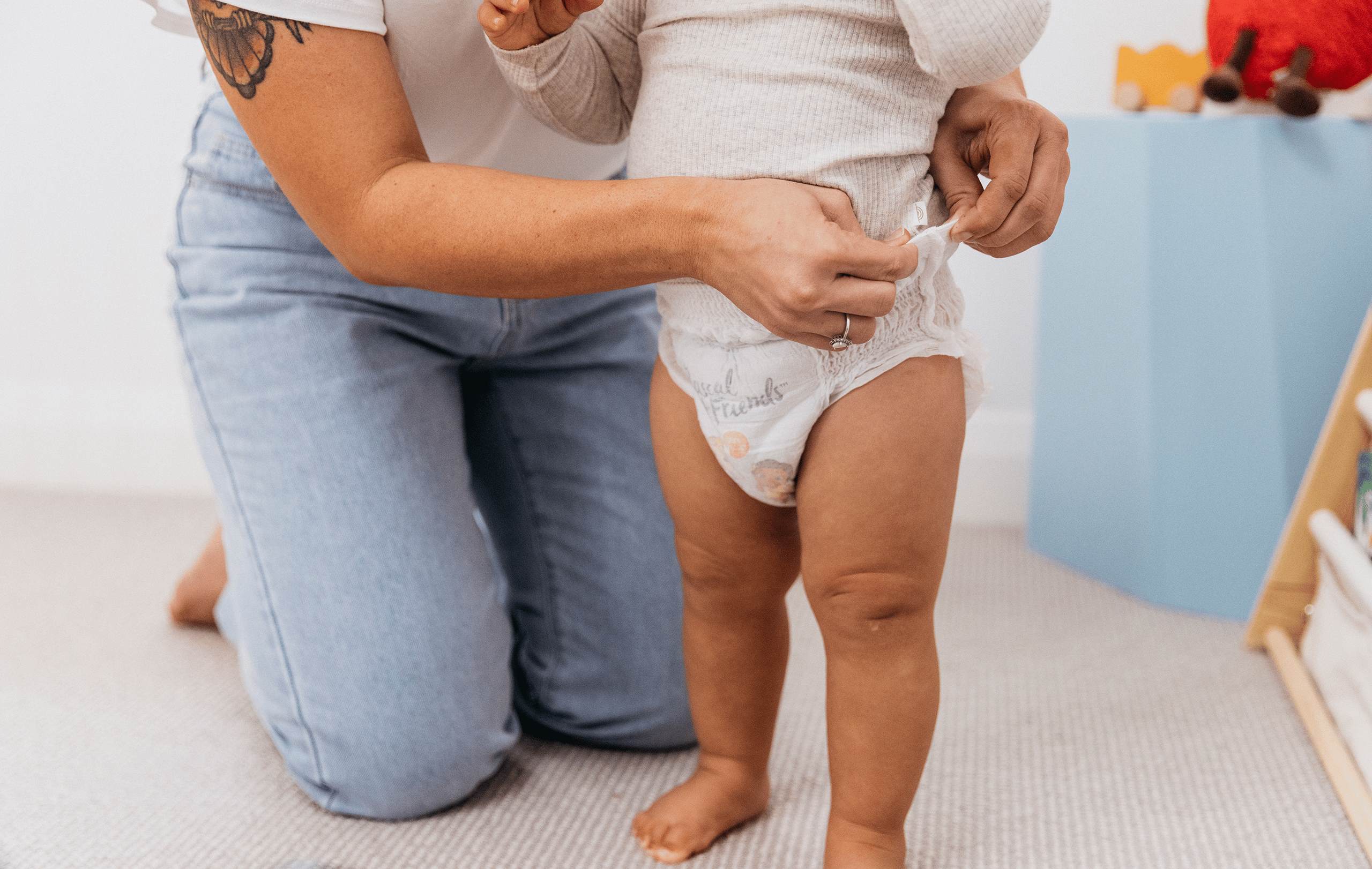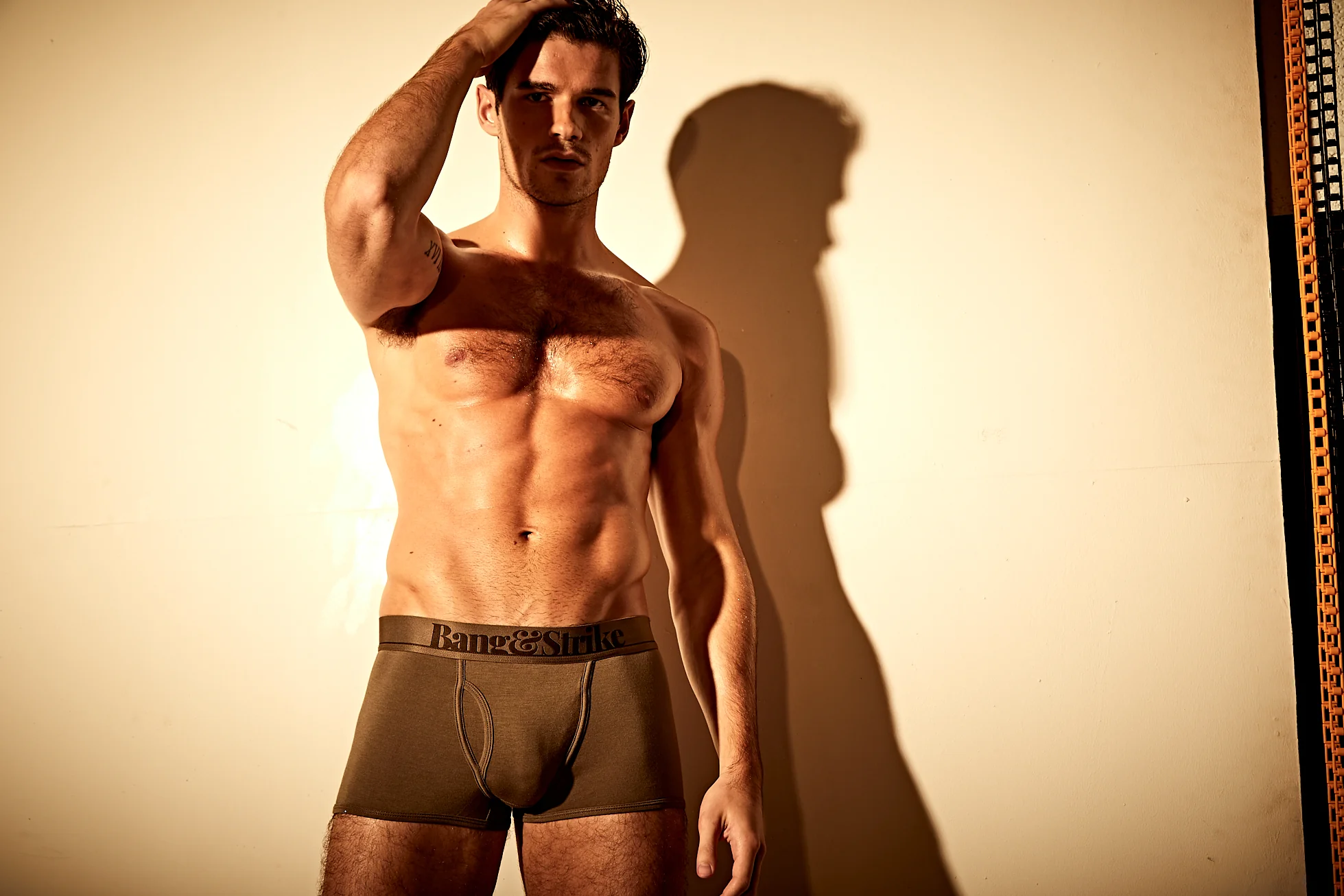Home>Latest Posts>What Is Training Underwear


Latest Posts
What Is Training Underwear
Modified: September 23, 2023
Learn about the different types of training underwear for toddlers and children. Find the best options to help with potty training.
(Many of the links in this article redirect to a specific reviewed product. Your purchase of these products through affiliate links helps to generate commission for Under-tec.com, at no extra cost. Learn more)
Table of Contents
- Introduction
- Definition of Training Underwear
- Purpose of Training Underwear
- Features of Training Underwear
- How to Choose the Right Training Underwear
- Benefits of Training Underwear
- Common Misconceptions about Training Underwear
- How to Transition from Diapers to Training Underwear
- Tips for Successfully Using Training Underwear
- Frequently Asked Questions about Training Underwear
- Conclusion
Introduction
Welcome to the exciting stage of your child’s development where they are ready to transition from diapers to underwear! This milestone is an important step towards their independence and potty training success. One essential item that can aid in this process is training underwear. Training underwear, also known as potty training pants or toddler underwear, is specifically designed to facilitate the transition from diapers to regular underwear.
In this article, we will explore the definition, purpose, features, and benefits of training underwear. We will also provide tips and guidance on choosing the right training underwear for your child and offer advice on successfully transitioning from diapers to training underwear.
During potty training, your child will gradually learn to recognize their body’s signals and develop the skills necessary for using the toilet independently. Training underwear plays a crucial role in this journey, as it offers a middle ground between diapers and regular underwear. These specially designed undergarments provide a sense of security and protection while allowing your child to take an active role in the potty training process.
As a parent or caregiver, it is natural to have questions and concerns about training underwear. We will address common misconceptions and provide answers to frequently asked questions, offering valuable insights to support you through this exciting phase.
So, whether you are just starting the potty training journey or looking for ways to enhance your current approach, this article is here to guide you through the world of training underwear and help make the process smoother and more successful.
Definition of Training Underwear
Training underwear, also known as potty training pants or toddler underwear, is a type of undergarment designed specifically for children who are transitioning from diapers to regular underwear. These special underpants are designed to mimic the look and feel of regular underwear while providing certain features to assist in the potty training process.
Unlike traditional diapers or pull-ups, training underwear is made with a combination of absorbent and waterproof materials. The absorbent layer helps contain small accidents while allowing the child to feel wetness, promoting awareness of the need to use the toilet. The waterproof layer acts as a barrier, preventing leaks and protecting clothes and furniture.
Training underwear is available in various styles, such as briefs or boxer briefs, and may feature fun prints or characters that engage children. They typically have a comfortable elastic waistband and leg openings to ensure a snug fit and prevent leaks. Some training underwear even come with additional features like removable absorbent inserts for adjustable absorbency levels.
It is important to note that training underwear is not meant to replace regular underwear but should be used during the potty training phase as a transitional garment. The purpose of training underwear is to give children a sense of independence and control while providing some degree of protection against accidents.
While training underwear resembles regular underwear, it is important to distinguish it from diapers or pull-ups. Unlike diapers, which are designed to be fully absorbent and require no additional steps for disposal, training underwear is designed to facilitate the transition to using the toilet. They aim to promote self-awareness and encourage children to recognize their body’s signals for using the bathroom.
Now that we have a clear understanding of what training underwear is, let’s explore the purpose and benefits of incorporating it into your child’s potty training journey.
Purpose of Training Underwear
The purpose of training underwear is to aid in the potty training process by providing a bridge between diapers and regular underwear. This specialized undergarment serves several important purposes that contribute to the overall success of potty training:
- Promoting independence: Training underwear allows children to feel like “big kids” and take an active role in their potty training journey. By wearing underwear instead of diapers, they gain a sense of independence and responsibility.
- Facilitating awareness: Training underwear is designed to help children become aware of their body’s sensations and signals associated with needing to use the bathroom. The fabric of training underwear allows them to feel wetness, which encourages them to recognize when they have had an accident and motivates them to use the toilet instead.
- Preventing major accidents: While training underwear may not be as absorbent as diapers, they provide a degree of protection against major accidents. The absorbent layer within the training underwear can catch small leaks and minimize the mess, reducing the need for constant cleanups.
- Maintaining dignity: As children transition from diapers to regular underwear, they often develop a desire for privacy and may feel embarrassed when accidents occur. Training underwear helps preserve their dignity and self-esteem by providing protection and preventing public embarrassment.
- Building confidence: By using training underwear, children gain confidence in their ability to control their bladder and bowel movements. As they successfully use the toilet more frequently and experience fewer accidents, their confidence grows, leading to a smoother and more successful potty training journey.
Training underwear serves as a valuable tool in the potty training process, supporting children in developing the skills necessary for successful toileting. With a clear understanding of the purpose of training underwear, let’s explore the features that make them ideal for this transitional phase.
Features of Training Underwear
Training underwear is designed with specific features that make them ideal for the potty training phase. These features differentiate them from regular underwear or diapers and enhance their effectiveness in supporting children during this transitional period:
- Absorbent layer: Training underwear contains an absorbent layer that helps contain small accidents and minimize leaks. This layer is designed to provide some level of absorbency without fully replacing the need for using the toilet.
- Waterproof layer: To prevent leaks and protect clothing and furniture, training underwear typically includes a waterproof layer. This layer acts as a barrier, ensuring that any accidents that occur are kept contained within the underwear.
- Elastic waistband and leg openings: Training underwear features a comfortable and stretchy elastic waistband and leg openings. These elastic elements provide a secure fit that prevents the underwear from slipping or bunching up, ensuring maximum comfort and leak protection.
- Fun designs and prints: Many training underwear options come in a variety of fun designs and prints. These visually appealing patterns can make the potty training process more exciting for children and encourage their enthusiasm for wearing training underwear.
- Adjustable absorbency: Some training underwear brands offer options with removable absorbent inserts. This feature allows parents or caregivers to adjust the level of absorbency based on their child’s needs, tailoring the underwear to their specific potty training stage.
- Easy on/off: Training underwear is designed to be pulled up and down easily, making it convenient for children who are learning to use the toilet independently. The ease of use helps build confidence and encourages children to take an active role in managing their own bathroom needs.
The combination of these features makes training underwear a practical and effective choice for children during the potty training process. Now that we understand the features of training underwear, let’s move on to the next section, which discusses how to choose the right training underwear for your child.
How to Choose the Right Training Underwear
Choosing the right training underwear for your child is essential to ensure their comfort and success during the potty training process. Here are some factors to consider when selecting the perfect training underwear:
- Size and fit: It is crucial to choose training underwear that fits your child properly. Look for options that offer a size chart or age/weight recommendations to determine the best fit. A snug but comfortable fit ensures that the underwear stays in place and prevents leaks.
- Material: Opt for training underwear made of breathable and soft materials, such as cotton or a cotton blend. These materials are gentle on the skin and enhance comfort during wear. Avoid synthetic fabrics that may cause irritation or discomfort.
- Absorbency level: Consider your child’s potty training progress and choose training underwear with an appropriate absorbency level. Some brands offer different absorbency options, allowing you to customize the underwear based on your child’s needs.
- Ease of use: Look for training underwear that is easy for your child to pull up and down. Elastic waistbands and leg openings enhance convenience and enable independence during bathroom trips.
- Design: Consider choosing training underwear with fun and engaging designs that resonate with your child’s interests. This can make the potty training experience more enjoyable and stimulate their enthusiasm for wearing the underwear.
- Quantity: Assess how many pairs of training underwear you will need. Depending on your child’s potty training progress and the frequency of accidents, you may need multiple pairs to ensure a continuous supply.
- Durability: Look for training underwear that is well-constructed and can withstand repeated washes. High-quality materials and reinforced stitching contribute to the durability and longevity of the underwear.
It is also worth considering involving your child in the selection process. Allow them to choose training underwear with their favorite colors or characters, which can increase their excitement and willingness to wear them.
Remember that every child is unique, and their preferences and needs may vary. Be open to trying different brands or styles until you find the training underwear that works best for your child during their potty training journey.
Now that you have an understanding of how to choose the right training underwear, let’s explore the various benefits that training underwear offers for both children and parents.
Benefits of Training Underwear
Training underwear offers a range of benefits for both children and parents during the potty training process. Let’s take a look at some of the key advantages:
- Promotes independence: Training underwear allows children to take an active role in their potty training journey. By wearing underwear instead of diapers, they feel a sense of independence and are more motivated to use the toilet.
- Builds self-awareness: The design of training underwear, with its absorbent layer, helps children recognize their body’s signals for needing to use the bathroom. Feeling wetness when accidents occur encourages them to connect the sensation with the need to use the toilet, fostering self-awareness.
- Reduces mess: While training underwear may not be as absorbent as diapers, they provide a layer of protection against major accidents. They help contain small leaks, reducing mess and making cleanups easier for parents or caregivers.
- Preserves dignity: As children navigate the potty training process, accidents may happen. Training underwear helps preserve their dignity by providing some level of protection, preventing public embarrassment, and allowing them to maintain a sense of pride.
- Boosts confidence: Successfully using the toilet while wearing training underwear boosts a child’s confidence. Each accident-free experience reinforces their belief in their ability to control their bodily functions, leading to greater confidence and motivation to continue their potty training journey.
- Fosters routine: Training underwear creates a routine where children are encouraged to use the toilet regularly. This routine helps instill good bathroom habits and assists in developing a consistent schedule for using the toilet.
- Simplifies the transition from diapers: Training underwear bridges the gap between diapers and regular underwear, making the transition smoother for children. They provide a familiar and comfortable middle ground while gradually promoting the use of regular underwear.
- Offers convenience for parents: While accidents may still occur during the potty training process, training underwear helps contain messes and reduces the need for constant changing and cleanup. This convenience can make the potty training experience less stressful for parents or caregivers.
By understanding the benefits of training underwear, parents and caregivers can appreciate how these specialized undergarments contribute to their child’s potty training success. Now that we understand the advantages, let’s address some common misconceptions about training underwear.
Common Misconceptions about Training Underwear
As with any topic related to child-rearing, there are some common misconceptions surrounding training underwear. Let’s debunk these misconceptions and set the record straight:
- Training underwear is the same as diapers: While training underwear and diapers may appear similar, they serve different purposes. Training underwear is designed to promote independence and awareness during the potty training process, whereas diapers are meant to be fully absorbent with no need for using the toilet.
- Training underwear is a quick fix for potty training: Training underwear is a tool to support and facilitate potty training, but it is not a magic solution. Successful potty training requires time, patience, consistency, and a positive approach from parents or caregivers.
- Wearing training underwear guarantees no accidents: Accidents are a natural part of the potty training journey. While training underwear helps contain small leaks, it does not eliminate the possibility of accidents altogether. It is essential to remain patient, supportive, and understanding during this learning process.
- Children will automatically understand how to use the toilet with training underwear: Training underwear is a tool to assist children in the potty training process, but they still need guidance and understanding from adults. It is important to provide clear instructions, positive reinforcement, and gentle reminders to help children learn and practice toilet use.
- Using training underwear means potty training will happen quickly: Every child is unique, and the duration of the potty training process varies. While training underwear can facilitate this journey, it is important to remember that every child develops at their own pace. Patience, consistency, and understanding are key during this time.
- Training underwear will hinder nighttime dryness: Training underwear should not be confused with nighttime or overnight bedwetting solutions. Training underwear is primarily designed for daytime use during the potty training process and may not provide the same level of absorbency required for overnight use.
- Training underwear is necessary for all children: While training underwear can be a useful tool for many children during potty training, it is not a requirement for every child. Some children may transition seamlessly from diapers to regular underwear without the need for training underwear. Readiness and individual preferences should be considered when deciding whether to use training underwear.
By dispelling these misconceptions, parents and caregivers can approach training underwear with a clearer understanding of its purpose and limitations. Now that we have addressed these misconceptions, let’s explore tips for a smooth transition from diapers to training underwear.
How to Transition from Diapers to Training Underwear
The transition from diapers to training underwear marks an important milestone in your child’s potty training journey. Here are some tips to help make this transition as smooth and successful as possible:
- Choose the right timing: Wait until your child shows signs of readiness for potty training, such as staying dry for longer periods, showing interest in the bathroom, or communicating their need to go. This will make the transition more natural and less overwhelming.
- Introduce gradually: Start by having your child wear training underwear during specific times of the day, such as after waking up, before bath time, or during playtime. Gradually increase the duration of wear until your child is comfortable wearing them throughout the day.
- Provide reminders and prompts: Remind your child to use the toilet regularly, especially during key times like after meals or drinks. Use gentle prompts and encourage them to sit on the potty, even if they don’t feel the need to go. Consistency is key to establishing a routine.
- Encourage self-initiation: Encourage your child to recognize their body’s signals and initiate using the toilet independently. Prompt them to listen to their body and communicate when they feel the need to go. Support and praise their efforts, even if accidents occur.
- Offer rewards and incentives: Reinforce positive behaviors and motivate your child by offering rewards, such as stickers or small treats, for successful toilet use or staying dry. This can help create positive associations with using the toilet and wearing training underwear.
- Stay positive and patient: Accidents are a normal part of the learning process. Respond to accidents calmly and without anger or frustration. Provide reassurance and comfort, reminding your child that accidents happen and they are still learning.
- Involve your child in the process: Allow your child to participate in choosing their training underwear. This involvement gives them a sense of ownership and makes them more excited about wearing them. Make it a fun and empowering experience for them.
- Support nighttime needs separately: Keep in mind that training underwear may not provide the same level of absorbency as nighttime diapers. Consider using special nighttime underwear or bedwetting solutions for secure overnight protection while your child continues to develop nighttime bladder control.
Remember, every child is unique and may progress at their own pace. Be patient, positive, and supportive throughout the transition process. Celebrate each milestone and offer encouragement along the way. With time and consistency, your child will successfully transition from diapers to training underwear.
With these tips in mind, let’s move on to the next section, which provides additional tips for successfully using training underwear during the potty training journey.
Tips for Successfully Using Training Underwear
Successfully using training underwear during the potty training journey involves more than just putting them on your child. Here are some helpful tips to ensure a smooth and successful experience:
- Establish a consistent routine: Create a regular schedule for bathroom breaks and encourage your child to use the toilet at consistent intervals throughout the day. Consistency helps reinforce good habits and signals to your child that using the toilet is a regular part of their routine.
- Encourage regular bathroom visits: Remind your child to use the toilet frequently, especially after meals or drinks. Encourage them to sit on the toilet for a few minutes even if they don’t feel the need to go. This helps establish the habit of regularly using the toilet.
- Praise and celebrate successes: Offer praise, attention, and verbal affirmation when your child successfully uses the toilet or stays dry. Celebrate their achievements with rewards such as stickers, a special treat, or a high-five. This positive reinforcement encourages them to continue their progress.
- Handle accidents calmly: Accidents are a normal part of the potty training process. When accidents happen, respond calmly and avoid punishment or criticism. Instead, guide your child to the bathroom while explaining that accidents happen, and encourage them to try again next time.
- Encourage independence: Support your child in taking the initiative to use the toilet independently. Prompt them to recognize their own body’s signals and encourage them to communicate when they need to go. Give them the freedom to try using the toilet on their own, even if accidents occur.
- Teach proper wiping and hygiene: Teach your child proper wiping techniques and hand hygiene after using the toilet. Demonstrate how to wipe from front to back for girls and encourage thorough handwashing with soap and water to prevent the spread of germs.
- Ensure easy access to the toilet: Make the toilet area easily accessible to your child. Consider using a step stool to help them reach the toilet comfortably, and ensure that the bathroom is a safe and welcoming environment for them to use independently.
- Be patient and flexible: Remember that every child learns at their own pace. Be patient, understanding, and flexible throughout the potty training process. Avoid comparing your child’s progress to others and focus on their unique journey.
Keep in mind that potty training takes time and consistent effort. Stay positive, encourage your child, and be prepared for setbacks along the way. With your guidance and support, your child will gradually become more independent in using the toilet while wearing their training underwear.
Now that we have explored tips for successful use of training underwear, let’s move on to the next section where we address some frequently asked questions about training underwear.
Frequently Asked Questions about Training Underwear
As parents and caregivers navigate the potty training journey, they often have questions about training underwear. Here are answers to some commonly asked questions:
- At what age should I start using training underwear?
The age at which children are ready for potty training varies. Most children begin showing signs of readiness between 18 months and 3 years old. Look for signs such as staying dry for longer periods, expressing interest in the bathroom, or showing discomfort in soiled diapers. - How many pairs of training underwear do I need?
The number of training underwear you need depends on your child’s potty training progress and the frequency of accidents. It is recommended to have at least 6 to 8 pairs on hand, allowing for frequent changes during the day. - Should I use training underwear during naps and nighttime?
While training underwear can be used during daytime naps, they may not provide sufficient absorbency for overnight use. Consider using specialized nighttime underwear or bedwetting solutions for overnight protection until your child consistently stays dry during sleep. - How should I handle accidents while wearing training underwear?
Accidents are a natural part of the potty training process. In the event of an accident, stay calm and guide your child to the toilet while explaining that accidents happen. Encourage them to try again next time and praise their efforts when they successfully use the toilet. - Can I use training underwear for a child with special needs?
Yes, training underwear can be used for children with special needs. However, it is essential to consider their specific needs and abilities when selecting training underwear. Choose options that accommodate any physical limitations and provide the necessary level of support and protection. - Should I use disposable or reusable training underwear?
The choice between disposable and reusable training underwear depends on your personal preference and environmental considerations. Disposable training underwear offers convenience and easy cleanup, while reusable options can be more cost-effective and better for the environment. - How long does the potty training process take?
The duration of potty training varies for each child. It can take weeks or even months for a child to fully grasp the concept and gain control over their bladder and bowel movements. Patience, consistency, and a positive approach are key during this process. - What if my child resists wearing training underwear?
If your child resists wearing training underwear, try to understand the reason behind their resistance. It could be a matter of preference, comfort, or anxiety. Involve them in the selection process, offer positive reinforcement, and provide reassurance to help overcome their resistance.
Remember, every child is unique, and there is no one-size-fits-all approach to potty training or using training underwear. Trust your instincts as a parent, be patient, and adapt your strategies based on your child’s individual needs and developmental progress.
Now that we have answered frequently asked questions about training underwear, let’s conclude this article by summarizing the essential points discussed.
Conclusion
The transition from diapers to training underwear is an important milestone in a child’s potty training journey. Training underwear serves as a valuable tool, providing a bridge between diapers and regular underwear, and supporting children in developing independence and self-awareness.
Throughout this article, we have explored the definition and purpose of training underwear, as well as the features that make them ideal for the potty training process. We discussed how to choose the right training underwear, the benefits it offers for children and parents, and debunked common misconceptions surrounding its use.
We also provided helpful tips for successfully using training underwear, including establishing a routine, offering praise and rewards, handling accidents calmly, and encouraging independence. Additionally, we addressed frequently asked questions to provide clarity and guidance for parents and caregivers.
Remember, every child’s potty training journey is unique, and progress may vary. It is vital to approach training underwear and potty training with patience, positivity, and flexibility. Provide a supportive and understanding environment, celebrate successes, and offer reassurance during setbacks.
By incorporating training underwear into your child’s potty training routine, you are empowering them to take charge of their bodily functions and develop important life skills. With time, consistency, and your guidance, your child will confidently transition from training underwear to regular underwear and achieve potty training success.
So, embrace this exciting stage and trust in your child’s ability to learn and grow. Happy potty training!










